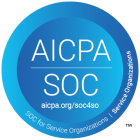Henry Truman once said that “Not all readers are leaders, but all leaders are readers.” No matter how many technological advancements we will live to see, there is one medium that will never become outdated – Books. There is nothing, absolutely nothing, quite like a good book. No matter the wave of technological advancements, one medium will always hold its relevance – Books. Nothing can quite replace the depth and breadth of knowledge that a well-written book can provide.
Whether you’re aspiring to master the art of PLG or attain the competency to lead growth-focused teams in your organization, these five books are absolutely essential. Each one of them carries a treasure trove of knowledge, lessons, and frameworks that, when applied correctly, will provide a strategic advantage in crafting successful PLG initiatives.
Here is your top 5 must-read list –
1. “Product-Led Growth: How to Build a Product That Sells Itself” by Wes Bush
Mastering the Art of Onboarding
Kicking off our list is the influential work by PLG expert, Wes Bush. “Product-Led Growth: How to Build a Product That Sells Itself” is a seminal guidebook in the realm of product-centric organizations, offering comprehensive, deep-dive insights into the creation of a product that inherently generates demand. Bush paints a vivid picture of the transformational shifts that modern-day organizations need to embrace, underlining the cardinal role that onboarding, customer satisfaction, and feedback play in propelling a product-led growth model.
In this exhaustive treatise, Bush stresses the importance of elevating the product as the heart and soul of your business. He highlights the significance of captivating customers right from their initial interaction and maintaining that engagement throughout their journey with your product. The power of a strong first impression cannot be overstated. Bush expounds on how successful onboarding can transform a casual user into a loyal advocate. It’s not just about familiarizing users with your product, but also about demonstrating value quickly and creating an experience that’s hard to abandon.
Customer Satisfaction as a Growth Driver
Equally noteworthy is the book’s exploration of customer satisfaction and its undeniable role in growing a product-focused business. Bush argues that it’s not enough for a product to meet the needs of a customer. It should go a step further, exceeding expectations and providing delight with every interaction. In this way, the product itself becomes a driver of growth.
The Cardinal Role of Feedback in PLG
The critical role of feedback in the PLG paradigm is also examined in-depth. Bush asserts that a PLG company is always listening, constantly collecting user feedback to refine and improve its product. By incorporating feedback loops, organizations can create products that evolve along with the needs of their customers, ensuring long-term user engagement and loyalty.
“Product-Led Growth: How to Build a Product That Sells Itself” is not just a book but a rich repository of knowledge, strategies, and actionable insights that are indispensable to constructing a thriving, product-focused business. By the time readers turn the last page, they are equipped with a deep understanding of PLG and the practical knowledge needed to implement its principles in their own organizations. This book is not just a masterclass in PLG but a blueprint for building a business that is capable of driving sustainable, customer-centric growth.
2. “The Product-Led Organization: Drive Growth by Putting Product at the Center of Your Customer Experience” by Todd Olson
Leveraging Customer Feedback for Growth
Todd Olson’s insightful work, “The Product-Led Organization: Drive Growth by Putting Product at the Center of Your Customer Experience”, elucidates a structured approach to transforming into a product-led organization. The book underscores the criticality of placing the product at the core of the customer experience and propounds efficient methodologies to realize this ambition. Drawing from a wealth of personal experience, Olson offers invaluable insights into embracing a product-centric mindset, deeply understanding customer needs, and synchronizing various organizational teams around the central premise of the product.
An important aspect Olson explores in his book is the power of customer feedback. He elaborates on how product-led organizations leverage feedback not just for remedial action, but also for continuous product improvement. He believes that customer feedback, both positive and negative, is an essential ingredient in the process of refining a product and creating an offering that hits the mark every time.
Importance of Data-Driven Insights
The book further stresses the significance of data-driven insights to enhance the customer journey and foster growth. It offers advice on establishing effective metrics, tracking user behavior, and using these insights to make informed decisions that elevate the user experience. Olson explains how data can be a powerful tool for improving user experience and delivering a product that effectively solves customer problems and fulfills their needs.
“The Product-Led Organization: Drive Growth by Putting Product at the Center of Your Customer Experience” is more than just a book; it is a well-crafted guide and a vital resource for anyone aiming to adopt a PLG approach. With its practical insights and actionable strategies, this book lays the groundwork for building and nurturing a truly product-led organization.
3. “Onboarding Matters” by Donna Weber
Donna Weber’s “Onboarding Matters” is an enlightening read, particularly for SaaS businesses looking to leverage a product-led growth model. Weber, through her years of experience and expertise in customer success, articulates the critical role of effective onboarding to the success of freemium products and businesses. She strongly believes that successful user activation largely relies on excellent onboarding procedures, and that a seamless and engaging onboarding experience is the linchpin of converting free users into paying clients.
Customizing Onboarding Experiences
One of the unique aspects that Weber covers in this book is how different user personas may require tailored onboarding experiences. She sheds light on the intricacies of onboarding for B2B SaaS solutions, arguing that they are more complex than those for consumer-oriented services. She contends that there is no one-size-fits-all onboarding method and hence, emphasizes the need for a flexible and adaptable approach to onboarding that caters to the unique needs of different user personas.
Weber’s Orchestrated Onboarding: A Game-Changer
Weber goes a step further to introduce the concept of “Orchestrated Onboarding,” a recurring theme throughout the book. According to her, a well-orchestrated onboarding process not only facilitates seamless internal communication but also provides an open channel for engaging with customers. The ultimate goal of orchestrated onboarding, as Weber suggests, is to deliver a unified customer experience by eliminating the silos between departments.
Weber’s ability to weave her experiences into practical advice makes this book an invaluable resource for B2B growth teams, particularly those in the SaaS domain. Her detailed explanations, clear-cut strategies, and the emphasis on putting the customer at the center of the onboarding process make this book a must-read for those looking to improve their onboarding process and, consequently, their customer retention rates.
Furthermore, Weber highlights the role of a smooth onboarding process in allowing new customers to realize the return on their investment. She underscores that the perceived value of your product is directly related to how effectively new users are onboarded and integrated into the product experience.
This nuanced view on the role of onboarding in driving customer satisfaction and product success is what sets Weber’s “Onboarding Matters” apart, making it a must-read for anyone looking to delve deeper into the intricacies of customer success in the realm of product-led growth.
4. “Monetization Innovation” by Madhavan Ramanujam & Georg Tacke
The Undervalued Power of Monetization and Pricing
Madhavan Ramanujam and Georg Tacke’s “Monetization Innovation” is a must-read for anybody involved in growth, especially those working in the B2B SaaS and Product-Led Growth (PLG) industries. Despite being critical components of the business model, monetization and pricing often don’t receive their due attention. However, in the context of B2B SaaS and PLG businesses, the pricing structure and strategy bear even more significance.
To stimulate customer acquisition and minimize entry barriers, it is essential to offer a free version or trial of your product. However, this necessitates the formation of precisely calibrated price tiers and compelling feature bundling to incentivize upgrades.
Pricing Strategy as a Catalyst for Customer Acquisition
The authors articulate that the success of PLG can largely be attributed to its dual focus on easing entry points and facilitating upgrade inducements.
“Monetization Innovation” does a stellar job at dissecting and laying out the fundamentals of pricing and monetization. It walks the reader through an expansive spectrum of topics: devising strategy, blueprinting a model, conducting customer interviews, interpreting quantitative data, and much more. Aspiring to harness newer avenues of revenue generation, this book serves as an essential reservoir of knowledge.
Ramanujam and Tacke also stress on the importance of understanding and leveraging this dual emphasis for RevOps and sales executives. By aligning their sales strategies with well-defined price tiers, they can effectively shepherd prospects through the sales funnel. This alignment, prioritizing customer experience, yields increased conversion rates and cultivates loyalty among existing customers.
Thus, “Monetization Innovation” emerges as an imperative read for individuals and organizations that aim to thrive in a product-led business environment, equipping them with the crucial understanding of the monetization dynamics and the prowess to execute successful pricing strategies.
5. “The Lean Product Playbook” by Dan Olsen
Bridging the Gap between UX Design and Lean Methodologies
Dan Olsen’s book, “The Lean Product Playbook”, stands as an invaluable guide to constructing products that customers truly appreciate. Offering a systematic approach, Olsen outlines the process to attaining Product-Market Fit. The book serves as a thorough manual for applying lean methodologies in the realm of product development, propelling the readers to deeply understand customer needs, create a compelling value proposition, and grasp the importance of validated learning through progressive product enhancements.
Achieving Product-Market Fit: A Lean Approach
By combining user experience (UX) design with lean startup methodologies, Olsen paints a comprehensive picture of ideation, prototyping, user testing, and analytics. He places a strong emphasis on data-driven decision-making and evidence-based adjustments, establishing the book as an indispensable resource for anyone striving to create a product-led organization.
Leaders and entrepreneurs will find in “The Lean Product Playbook” the knowledge and practical guidance they need to navigate the intricate paths, avoid common pitfalls, and maximize the promising opportunities in the product-led growth landscape. This book equips its readers with a broad understanding of lean product development, preparing them to propel their business towards substantial growth.
With its focus on combining UX design with lean startup methodologies, it covers essential topics such as ideation, prototyping, user testing, and analytics. This book is an indispensable resource for those looking to create a product-led organization, providing the knowledge and practical guidance needed to navigate the challenges and maximize the opportunities in the world of PLG. By investing time in this book, leaders can equip themselves with a holistic understanding of lean product development, preparing them to drive their business to new heights.
In conclusion, all these books are uniquely beneficial in providing insightful guidance to build a successful product-led organization. They cover a range of aspects from the fundamental understanding of PLG to practical strategies, monetization, customer onboarding, and achieving product-market fit. Each book offers different perspectives, which when combined, provide a comprehensive understanding of PLG. Reading these books can significantly enhance one’s knowledge and skills in the PLG domain, preparing them to drive their organization towards becoming truly product-led. However, it’s worth noting that while these books offer valuable insights and guidance, it is the diligent application of these learnings that will ultimately pave the path towards success.


